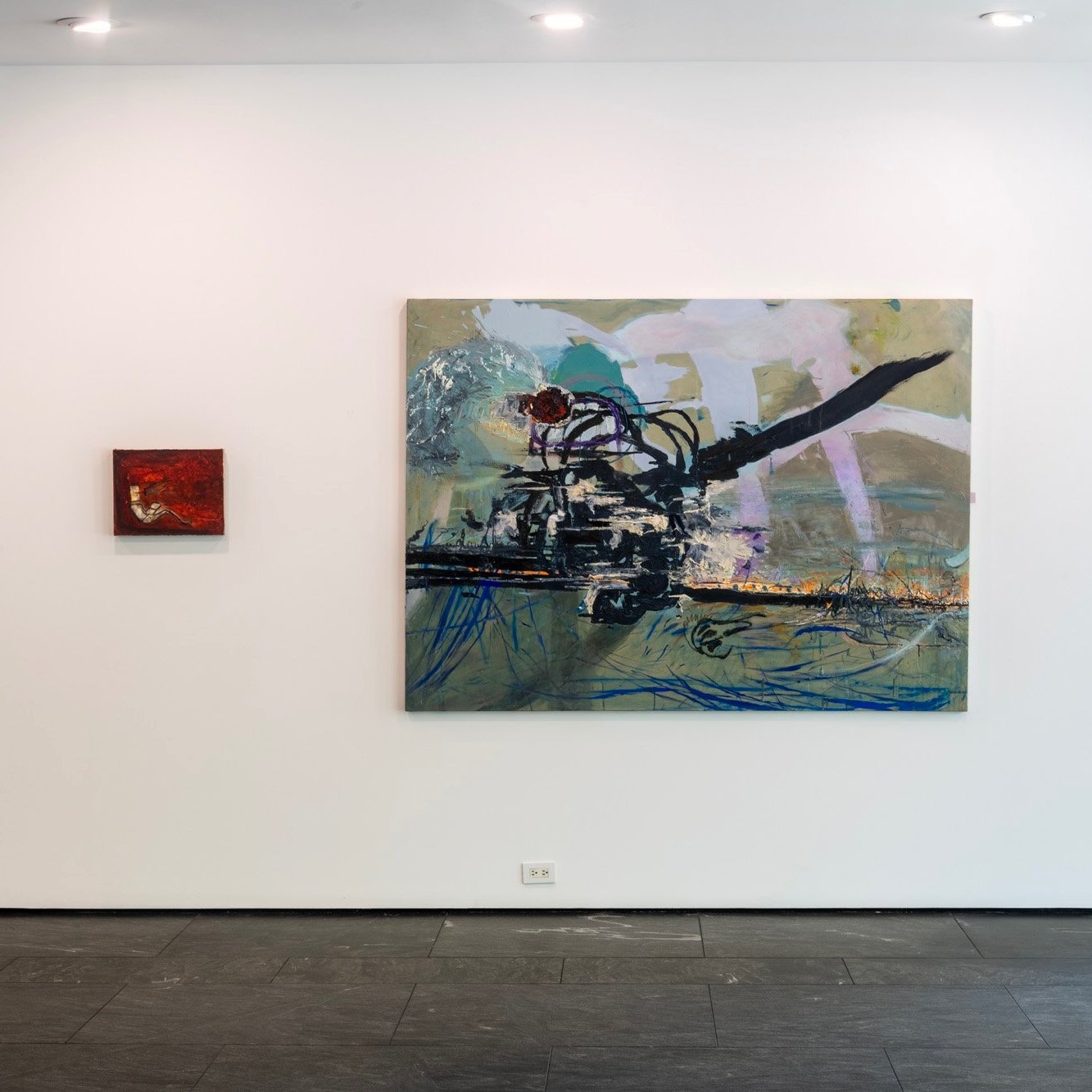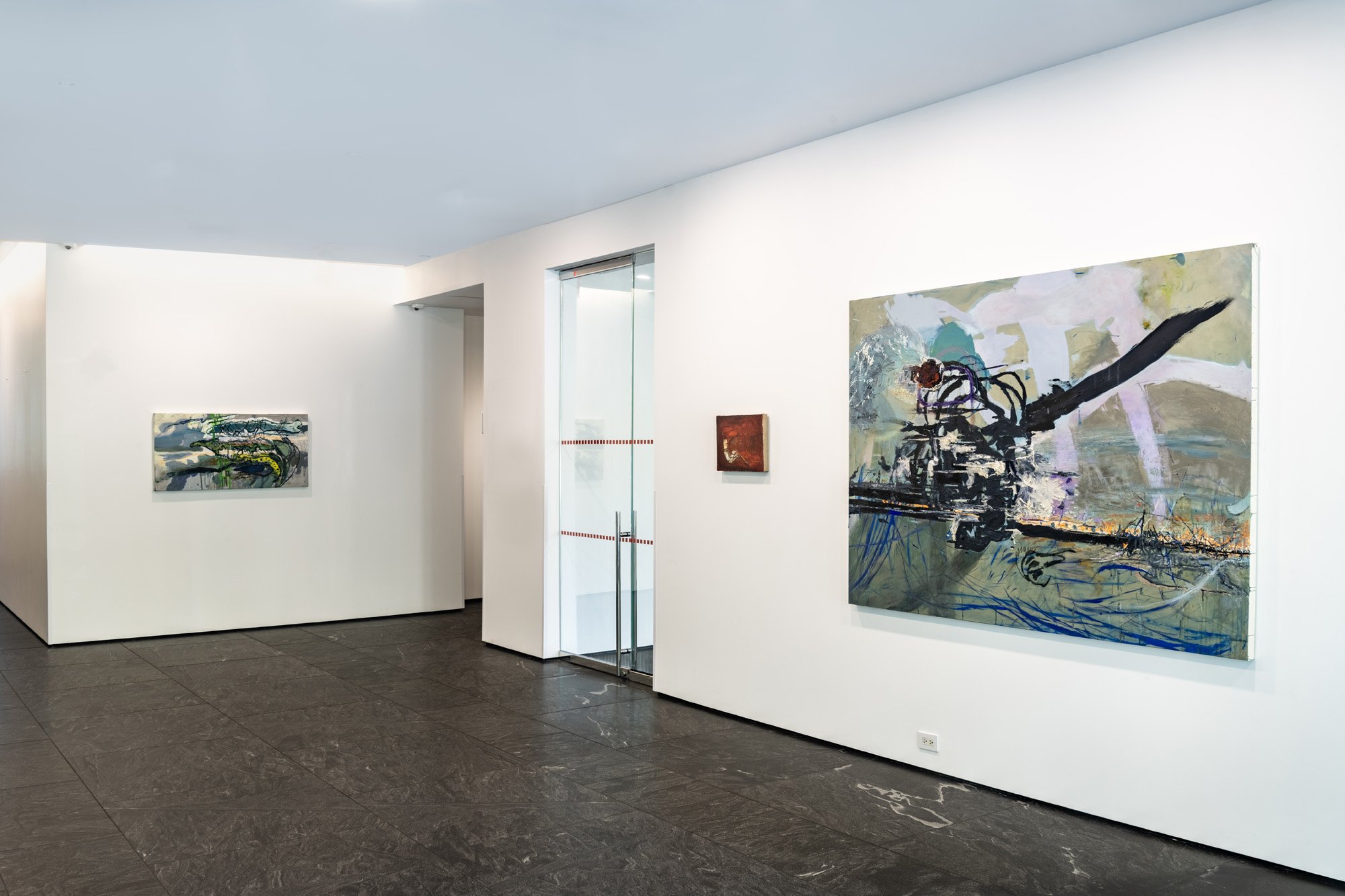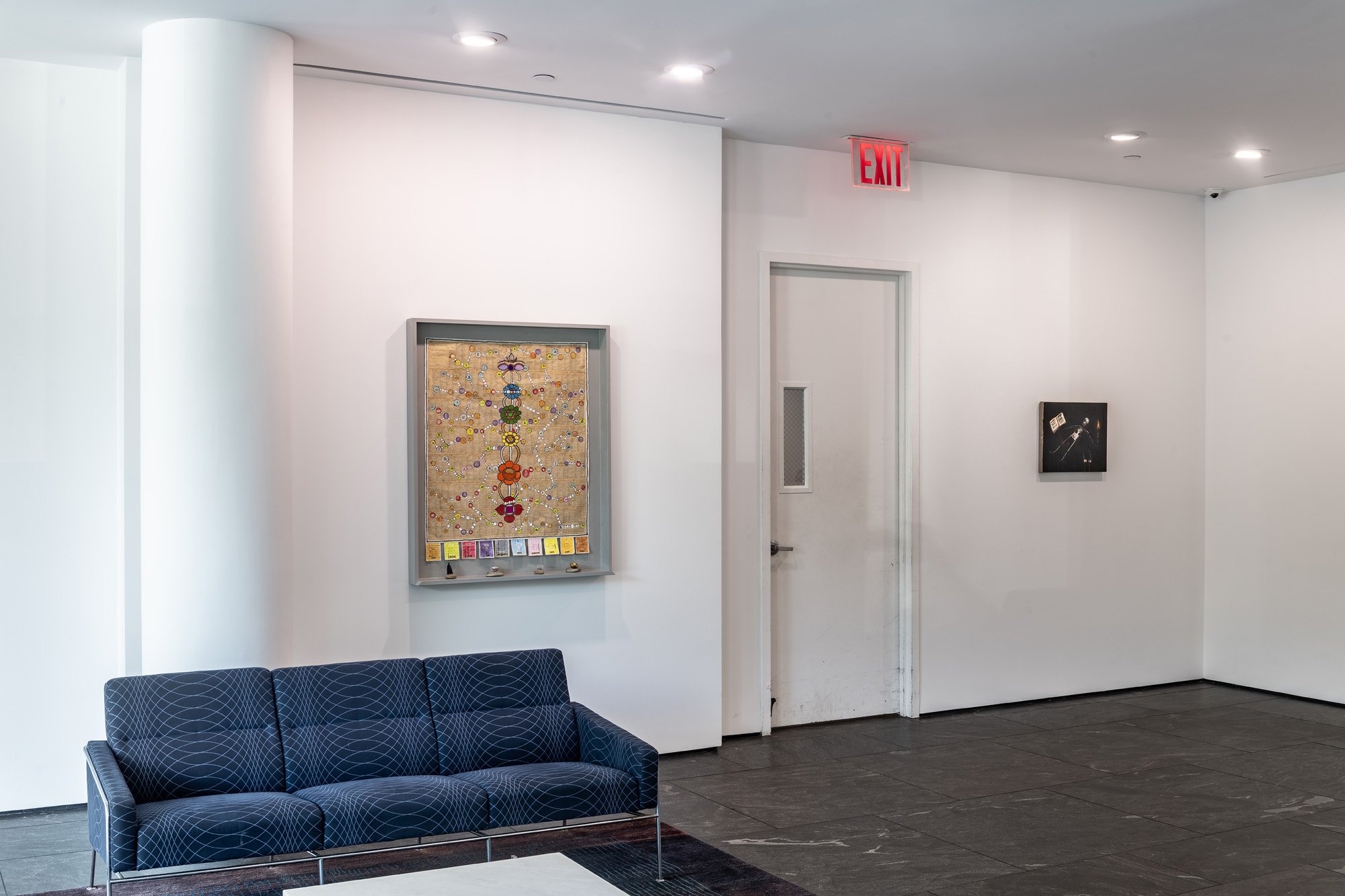Susanna Heller and Friends
Nancy Bowen, Susanna Heller, Medrie MacPhee, and Mira Schor
October 22, 2023 - January 7, 2024
An exhibition curated by Adam Hurwitz and Jennifer Samet
Like many, I had the privilege of reveling in the enthusiasm and passion of painter Susanna Heller (1956-2021). We met when we were both teaching at Purchase College, State University of New York. For one season, I carpooled from the campus in Westchester back to Manhattan with Heller and the artist Judy Glanztman. It happened to be the autumn of 2016, during the presidential campaign and election. Heller had a radical political conscience, and our trio, during these 40-minute commutes, became a place to process our horror - particularly the violent language towards women which emerged, our hope in the activism of women and eventually, our tremendous disappointment. These conversations helped lead me toward a massive curatorial endeavor, realized in a January 2017 group exhibition exploring body-based and explicit imagery made by women artists at David & Schweitzer Gallery in Bushwick.
Heller’s energy was contagious. “Yes, Yes!” she would say. It was a rallying call to connect with one another, to believe in the massive potential of drawing and painting, to bring out the absolute best in her students, to pursue social justice, and to live life to the fullest, especially in one’s studio. After spending years as her husband’s devoted caretaker, she was victim to a series of health issues, and left us far too soon. But her painting and drawing carries this passion, energy, and life force forward.
After Heller’s passing, I began to realize how a close knit group of women artist friends was also dedicated to carrying her work forward. Mira Schor and Medrie MacPhee met Heller at the Nova Scotia College of Art and Design in the 1970s; Schor was a young full-time professor, and MacPhee and Heller were undergraduate students. Nancy Bowen met this group in New York through Eric Fischl and April Gornik, who had also taught at NSCAD.
Heller, who was born in New York, but raised, from the age of seven, in Montreal, maintained a strong Canadian connection through her work. Many of her most significant paintings and works on paper can be found in the collections of Canadian museums, and her estate is represented by Toronto gallery Olga Korper Gallery. Yet, her main subject was New York City. Heller has called the city her “lover,” and notes that she was resentful when her family moved away; she couldn’t wait to get back after her studies were complete. The Gallery at One Grand Army Plaza, with its window walls looking onto the streets of Brooklyn and Prospect Park - steps from the arched historic entrance to the park, seemed the perfect venue for Heller’s work.
Heller’s paintings are not, in any sense, traditional cityscapes. Recognizable aspects of the city, like its skyline, the city grid, or even the pedestrians, are often nonexistent or illegible in her work. Instead, Heller focused on the “space” of the city, its layers and its movement: weather systems passing through, and her process of walking through the streets looking down and encountering rusty train tracks, and looking up to crowds of people.
All of her paintings came from the daily practice of drawing. During an 18 month residency in 1999-2000, she drew and painted from the 91st floor of the World Trade Center. After 9/11, she went on-site to draw from the ruins every day. She said that the moment the pencil touches the paper, time stops. Her panoramas and horizontal works are the story of walking through the city. She referred to the city as a place of “insane crowdedness and incredible loneliness,” and wanted to capture this, more than places or things, in her work.
The friendship between Heller, Schor, MacPhee, and Bowen is also about a community of women artists, who upheld each other in an art world which negated the contribution of women. Their feminism and their politics was a unifying force.
As Medrie MacPhee notes, “Susanna and I moved from Halifax to the East Village after we graduated from the Nova Scotia College of Art and Design in the 1970s, and, as young artists living on little, our essential nourishment, other than cigarettes, was our intense dialogues about painting....We encouraged each other, critiqued each other’s work and reinforced each other’s total commitment to being artists- something essential at that time in an art world largely devoid of women.”
MacPhee’s work is imbued with feminist ideas despite its formalist concerns in terms of the organization of forms in a visual field. She uses clothing, sourced from second-hand and 99-cent stores, deconstructed and reassembled, flattened, painted, and collaged on the canvas to create her paintings. The presence of elements like pockets and zippers makes these fabrics recognizable as clothing, and lends humor to the work. She originally began deconstructing and re-assembling clothing as gifts for her friends, and it led to a new mode of working. It calls to mind the 1977-78 essay by Miriam Schapiro and Melissa Meyer, in which they defined “femmage” as work made by women artists that contains recycled scraps, covert imagery reflecting women’s experience, and in which abstract forms create patterns.
This connects to the work of Nancy Bowen. Bowen salvages (often disappearing) ornament and craft traditions from a variety of cultures and times, incorporating them into sculpture and drawings. Bowen often works between two and three dimensions creating assemblage wall works. She has used old book pages as a starting point for her collaged works on paper. Cleaning her parents’ house after their death, she says, “I noticed how many of the books had a tacit patriarchal bias. I decided to take them apart and reconstruct them with a feminist point of view.” For example, she overlaid texts with the multiplying image of the Hindu Goddess Kali’s tongue. Other works are related to images of the chakras. Bowen says she was originally interested in Buddhist and Hindu imagery because “those cultures were one of the few places in
the world where the female body was accorded the same position as the male body- i.e. same size, same agency, not submissive or smaller than the men.”
Mira Schor is a feminist painter and writer whose work exists at the meeting-point of materiality, visual pleasure, and linguistic content. Schor often incorporates text into her paintings, which explore the links between the female body, private contemplation and public action. Schor writes, “My interest in language as image has been based from the beginning on feeling that women are filled with language, and by language I mean not only feelings, hopes and fears, but also ideas, philosophies and stories, even if they are not generally considered as such.” Schor studied at the California Institute of Arts in the early 1970s, where she was a member of the Feminist Art Program and a participant in the historic feminist art installation Womanhouse. Simplified versions of figures have eyes, sexual organs, and they read, look, and receive light. As Schor states,”They all have eyeglasses so they see, they receive vision, they project vision, to and from the world, to and from the books they often hold.” Her black or “Red Tie” paintings were done as an immediate response to the 2016 election and are part of an ongoing group of works addressing the rise of fascism in the United States.
I am grateful to Nancy Bowen, Susanna Heller, Medrie MacPhee, and Mira Schor for the community they created. Thank you to the artists and the estate of Susanna Heller, and their gallery representatives for making this exhibition possible, and to the 1GAP Gallery Committee. Special thanks to my partner and co-curator Adam Hurwitz.
Jennifer Samet, October 2023
About the Artists:
Nancy Bowen (b. 1955) is a mixed media artist and Professor of Sculpture at Purchase College, SUNY. A new book, Spectral Evidence: The Witch Book (Litmus Press, 2023) brings together art by Bowen and text by Elizabeth Willis.
Medrie MacPhee (b. 1953, Edmonton, Alberta) is represented by Tibor de Nagy Gallery. MacPhee is currently Sherri Burt Hennessey Artist-In-Residence at Bard College in Annandale-on-Hudson, New York.
Mira Schor (b. 1950, New York) is represented by Lyles & King Gallery. She is the subject of a solo exhibition, Moon Room, at the Bourse de Commerce, Pinault Collection, Paris, on view now through January 22, 2024.
Susanna Heller (1956-2021) is represented by Olga Korper Gallery, Toronto. Her last drawings were recently the subject of the exhibition Eyes on the City: Drawings by Susanna Heller and Karlis Rekevics, curated by Karen Wilkin, on view June - July, 2023 at the New York Studio School.













